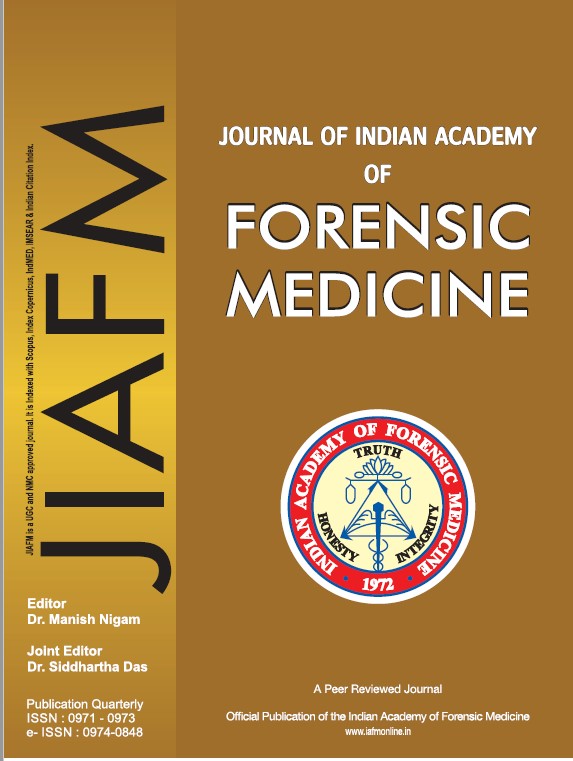Manner of Death in Electrocution: A Case Series
DOI:
https://doi.org/10.48165/jiafm.2023.45.4.23Keywords:
Electrocution, Suicide, Flash burn, Charred, Manner of deathAbstract
Electrocution is defined as death caused by the passage of current through the body. The cause of death in a case of electrocution are many depending on the organ system it affects like nervous system, cardiovascular system and thermal injury to the body. However, when it comes to decide the manner of death, the type, pattern and distribution of injury over the body along with the circumstantial evidences collected helps in designating the manner of death as suicidal, homicidal or accidental. The authors discussed here three cases of electrocution with three different manners of death. The type of burns sustained over the body and the area affected are related with the manner of death in tabulated form. Most of the electric injuries sustained at home, are accidental in manner. However, suicidal cases by the electrical injuries are not uncommon but rarely homicidal.
Downloads
References
Di Maio V, Dominick J. Forensic Pathology Practical aspects of criminal and forensic investigation. 2nd ed. Boca Raton, USA. CRC Press; 2001.
Vij K. Textbook of Forensic Medicine and Toxicology. 5th ed. Chennai, India, Elsevier; 2011.
Reddy KSN. The Essentials of Forensic Medicine and Toxicology. 33rd ed. New Delhi, India, Jaypee Brothers Medical Publishers; 2014.
Saukko P, Knight B. Forensic Pathology, Boca Raton. 4th ed. USA: CRC Press; 2016.
Dikshit PC. Textbook of Forensic Medicine and Toxicology. 2nd ed. New Delhi. PEE PEE Publishers and distributors Ltd; 2014.
Parakkattil J, Kandasamy S, Das S, Devnath GP, Chaudhari VA, Shaha KK. Atypical Exit Wound in High-Voltage Electrocution. Am J Forensic Med Pathol. 2017 Dec;38(4):336-338. doi: 10.1097/PAF.0000000000000347. PMID: 28915129.
Simpson CK. Simpson's Forensic Medicine. 13th ed. London: Arnold Press; 2003.
Cordner S. Patterns of injury – an evaluation, Pathology, 43 (1) 2011, p. S25, ISSN 0031-3025, https://doi.org/10.1016/ S0031-3025(16)33134-8.


